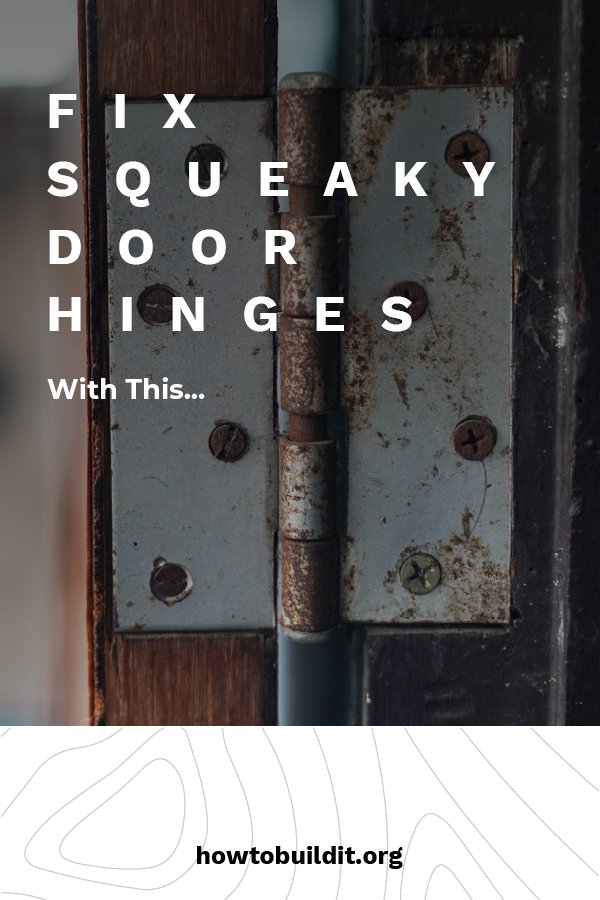
If you’ve got a home improvement project on the horizon or just want to add a little TLC to your space, understanding how to diagnose those squeaks is a handy skill. So, whether you’re a DIY newbie or a seasoned pro, knowing the difference between these parts can save you time and possibly money. In this guide, we’ll walk through the steps to identify what’s causing your squeaky door hinge trouble and how to address it effectively.
What Causes a Door Hinge to Squeak?
Before diving into diagnosis, let’s explore why hinges squeak in the first place. A squeaky door hinge usually stems from a lack of lubrication, dirt buildup, or wear and tear on the hinge itself. Just like you might feel stiff after a long day of sitting, hinges can get stiff if they’re not well-oiled. When the moving parts don’t glide smoothly, friction kicks in, leading to that pesky squeak.
Most commonly, a hinge consists of three main components: the pin, the leaves, and sometimes, a bearing. Understanding these parts helps when determining where the issue lies. A little bit of inspection can go a long way, just like giving your car a quick once-over before a road trip.
Identifying the Problem: Is it the Pin?
The pin is the metal rod that runs through the hinge leaves, allowing them to pivot easily. If the pin is rusty or misaligned, it can create noise. To check if the pin is the problem, you’ll want to remove it from the hinge. Grab a hammer and a small block of wood; gently tap the pin out. If you see rust or debris, clean it with a wire brush and apply a little lubricant.
Not sure what kind of lubricant to use? Look for something specifically designed for hinges or general-purpose oil. WD-40 is a popular choice, but you can also use a silicone spray for a longer-lasting solution.
Here’s a quick checklist:
- Remove the pin carefully.
- Inspect for rust or dirt.
- Clean and lubricate.
- Reinsert the pin and test for squeaks.
If the squeak persists after this, it may not be the pin’s fault.
Checking the Leaves: Are They Bent or Dirty?
If the pin isn’t the issue, the next suspect is the leaves of the hinge themselves. The leaves are the flat plates that attach to the door and the frame. Over time, they can accumulate dirt, grime, or even get bent. To check, take a close look at the alignment of the leaves. Are they sitting flush against the door and frame? If not, it might be time to adjust them.
Cleaning the leaves is straightforward. Simply wipe them down with a damp cloth to remove any dirt. If they appear bent, gently bend them back into place using pliers. Once cleaned and aligned, add a bit of lubricant to the hinge where the leaves meet. This can really help reduce friction and quiet those squeaks.
If you’ve done this and the noise remains, you might begin to suspect the bearing.
Understanding the Bearing: A Hidden Culprit
Some door hinges come with bearings that help the hinge move more smoothly. Sometimes, the bearings can wear out or get dirty, leading to a squeaky situation. Unfortunately, not all hinges have visible bearings, so diagnosing this can be a bit trickier.
If you suspect the bearing might be the problem, start by removing the hinge completely. Look closely at the area where the bearing sits. Is there any debris or rust? Clean it up if necessary. If the bearing seems worn out, you might have to replace the entire hinge, as they aren’t typically sold separately.
Remember, it’s not just about fixing the noise; it’s about ensuring your door operates smoothly for years to come. A new hinge may seem like an extra cost, but it often saves you more hassle down the road.
Testing Your Fix: How to Check for Success
After you’ve cleaned, adjusted, and lubricated the pin, leaves, or even replaced the bearing, it’s time to put it to the test. Open and close the door gently a few times. Listen carefully. Is that squeaky noise still there? If the sound has diminished or disappeared entirely, congratulations! You’ve successfully diagnosed and treated your squeaky door hinge.
However, if the noise persists, you might want to reevaluate which part of the hinge you’re focusing on. Sometimes, it takes more than one fix to totally eliminate the sound. Don’t get discouraged; door hinges can be stubborn!
Preventing Future Squeaks: Maintenance Tips
Once you’ve dealt with the squeak, you want to keep your hinges quiet for as long as possible. Prevention is key! Regular maintenance can significantly extend the life of your hinges. Here are some simple tips to keep them in top shape:
- Check your hinges every few months for rust or dirt.
- Reapply lubricant as needed—every six months is a good rule of thumb.
- Keep the door and frame clean; dirt buildup can contribute to squeaks.
- If you notice any misalignment, adjust promptly to prevent wear.
By making these checks a part of your regular home maintenance routine, you can prevent squeaks from becoming a long-term issue.
When to Call in a Professional
Sometimes, despite your best efforts, a squeaky door hinge may require professional attention. If, after all the troubleshooting, you still can’t identify the problem, it may be time to call in a handyman. They can assess if the doorframe is misaligned or if more extensive repairs are needed.
Remember, taking care of your home means knowing when you can DIY and when it’s best to let the pros handle it. After all, a little help can go a long way in keeping your home comfortable and quiet.
In conclusion, diagnosing a squeaky door hinge might seem intimidating, but it’s quite manageable once you break it down. By focusing on the pin, leaves, and bearing, you’ll be able to identify the issue and apply the right fixes. With a bit of maintenance, your doors can be both functional and silent. So next time you hear that annoying squeak, you’ll know just what to do!
